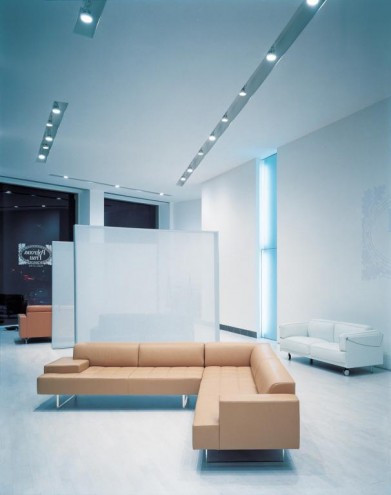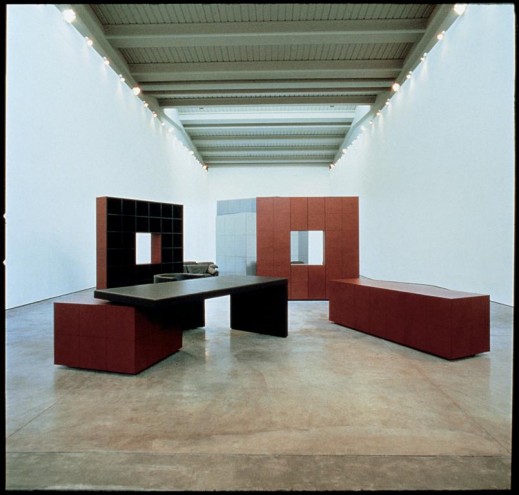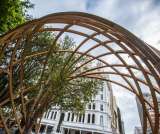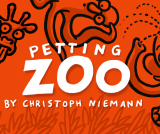First Published in
Design Indaba 2007 delegates were treated to a vast design panorama from Massimo and Lella Vignelli; including exhibition, interior, furniture, and consumer product designs for many leading American and European companies and institutions, as well as graphic and corporate identity programmes, publication designs and architectural graphics.
Designs first conceived decades ago remained striking and fresh - as Massimo stated, "design is timeliness, but there is a vibration that can be made more contemporary by the use of new materials".
Born into Italian architectural families - he in Milan and she in Udine - the Vignellis also studied architecture before travelling to the United States. Massimo had fellowships from Towle Silversmiths in Massachusetts and the Institute of Design, Illinois Institute of Technology, Chicago; Lella received a tuition fellowship as a special student at the School of Architecture, Massachusetts Institute of Technology, Cambridge. They set up the Vignelli Office of Design and Architecture in Milan in 1960 and in 1965 co-founded Unimark International Corporation, with offices in Milan and New York. Massimo was design director while Lella was head of the interiors department.
The couple established Vignelli Associates in 1971, where Lella is now CEO, and in 1978 set up Vignelli Designs, a company dedicated to product and furniture design, of which Lella is President.
"We like to design things that look like they've always been there," they said, and their work has been published and exhibited throughout the world and is part of the permanent collections of several museums. Notably, the Museum of Modern Art, the Metropolitan Museum of Art, the Brooklyn Museum, and the Cooper-Hewitt Museum in New York; the Musée des Arts Décoratifs in Montreal; and Die Neue Sammlung in Munich.
"We can only design when we need something, because then you know what you need. If you can't find it, design it."
Two feature-length television programmes on the Vignelli's work have been aired worldwide. A monographic exhibition of the Vignellis' work toured Europe between 1989 and 1993, and was featured in St Petersburg, Moscow, Helsinki, London, Budapest, Barcelona, Copenhagen, Munich, Prague and Paris.
Numerous awards presented to the couple include the National Lifetime Achievement Award from the National Museum of Design at Cooper-Hewitt, New York (2003); the Visionary Award from the Museum of Art and Design, New York (2004); the Architecture Award from the American Academy of Arts and Letters, New York (2005); and several honorary doctorates from distinguished institutions such as Parsons School of Design, New York.
Massimo Maxims
On design: "I like design to be understandable, visually powerful, intellectually elegant and, above all, timeless. I can't stand trendiness and obsolescence."
On market research: "Market research is a science invented in America to protect management from fear of failure."
On clients: "Good clients like to take risks. It is through better clients that you can really make a terrific contribution, which is the only reason we are alive in our profession. You've got to have glamorous clients. If you've got glamorous clients, you get the glamorous jobs, you get the glamorous profile in the profession, you become glamorous. It rubs off!"
On the arts: "The only thing which all the arts have in common is light."
On typefaces: "In the new computer age, the proliferation of typefaces and type manipulations represents a new level of visual pollution, threatening our culture. Out of thousands of typefaces, all we need are a few basic ones, and trash the rest. If desktop publishers were doctors we would all be dead."
On the Design Indaba: "It is the best design conference in the world, involving the whole field of design 'from the spoon to the city'. We had terrific presentations by industrial designers, graphic designers, fashion designers, illustrators, cartoonists, design theoreticians, and more. I do not know of any other conference that covers the whole field with superstars, which means the highest level possible. You seem to overcome all difficulties encountered by the other design conferences and be able to produce the miracle of a super-exciting event for 3 000 people at a time! Incredible! If a designer can afford to go to only one design conference, that one should be the Indaba. Designers from all over the world should converge in your beautiful town and participate in the next Indaba conference."
Design Indaba 2007 delegates were treated to a vast design panorama from Massimo and Lella Vignelli; including exhibition, interior, furniture, and consumer product designs for many leading American and European companies and institutions, as well as graphic and corporate identity programmes, publication designs and architectural graphics.
Designs first conceived decades ago remained striking and fresh - as Massimo stated, "design is timeliness, but there is a vibration that can be made more contemporary by the use of new materials".
Born into Italian architectural families - he in Milan and she in Udine - the Vignellis also studied architecture before travelling to the United States. Massimo had fellowships from Towle Silversmiths in Massachusetts and the Institute of Design, Illinois Institute of Technology, Chicago; Lella received a tuition fellowship as a special student at the School of Architecture, Massachusetts Institute of Technology, Cambridge. They set up the Vignelli Office of Design and Architecture in Milan in 1960 and in 1965 co-founded Unimark International Corporation, with offices in Milan and New York. Massimo was design director while Lella was head of the interiors department.
The couple established Vignelli Associates in 1971, where Lella is now CEO, and in 1978 set up Vignelli Designs, a company dedicated to product and furniture design, of which Lella is President.
"We like to design things that look like they've always been there," they said, and their work has been published and exhibited throughout the world and is part of the permanent collections of several museums. Notably, the Museum of Modern Art, the Metropolitan Museum of Art, the Brooklyn Museum, and the Cooper-Hewitt Museum in New York; the Musée des Arts Décoratifs in Montreal; and Die Neue Sammlung in Munich.
"We can only design when we need something, because then you know what you need. If you can't find it, design it."
Two feature-length television programmes on the Vignelli's work have been aired worldwide. A monographic exhibition of the Vignellis' work toured Europe between 1989 and 1993, and was featured in St Petersburg, Moscow, Helsinki, London, Budapest, Barcelona, Copenhagen, Munich, Prague and Paris.
Numerous awards presented to the couple include the National Lifetime Achievement Award from the National Museum of Design at Cooper-Hewitt, New York (2003); the Visionary Award from the Museum of Art and Design, New York (2004); the Architecture Award from the American Academy of Arts and Letters, New York (2005); and several honorary doctorates from distinguished institutions such as Parsons School of Design, New York.
Massimo Maxims
On design: "I like design to be understandable, visually powerful, intellectually elegant and, above all, timeless. I can't stand trendiness and obsolescence."
On market research: "Market research is a science invented in America to protect management from fear of failure."
On clients: "Good clients like to take risks. It is through better clients that you can really make a terrific contribution, which is the only reason we are alive in our profession. You've got to have glamorous clients. If you've got glamorous clients, you get the glamorous jobs, you get the glamorous profile in the profession, you become glamorous. It rubs off!"
On the arts: "The only thing which all the arts have in common is light."
On typefaces: "In the new computer age, the proliferation of typefaces and type manipulations represents a new level of visual pollution, threatening our culture. Out of thousands of typefaces, all we need are a few basic ones, and trash the rest. If desktop publishers were doctors we would all be dead."
On the Design Indaba: "It is the best design conference in the world, involving the whole field of design 'from the spoon to the city'. We had terrific presentations by industrial designers, graphic designers, fashion designers, illustrators, cartoonists, design theoreticians, and more. I do not know of any other conference that covers the whole field with superstars, which means the highest level possible. You seem to overcome all difficulties encountered by the other design conferences and be able to produce the miracle of a super-exciting event for 3 000 people at a time! Incredible! If a designer can afford to go to only one design conference, that one should be the Indaba. Designers from all over the world should converge in your beautiful town and participate in the next Indaba conference."























